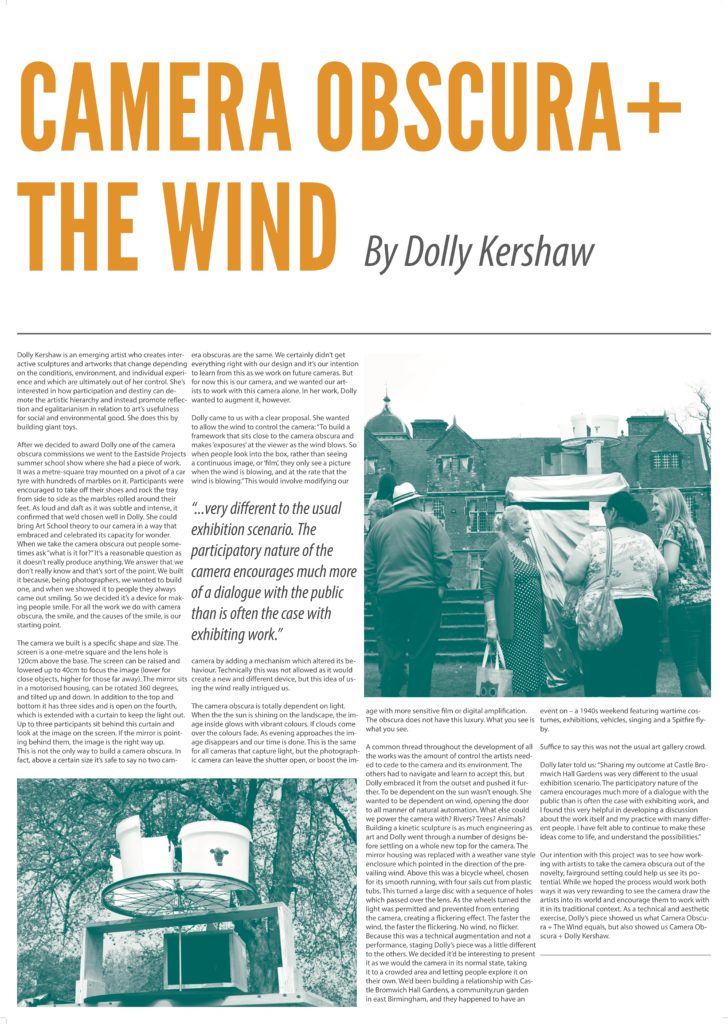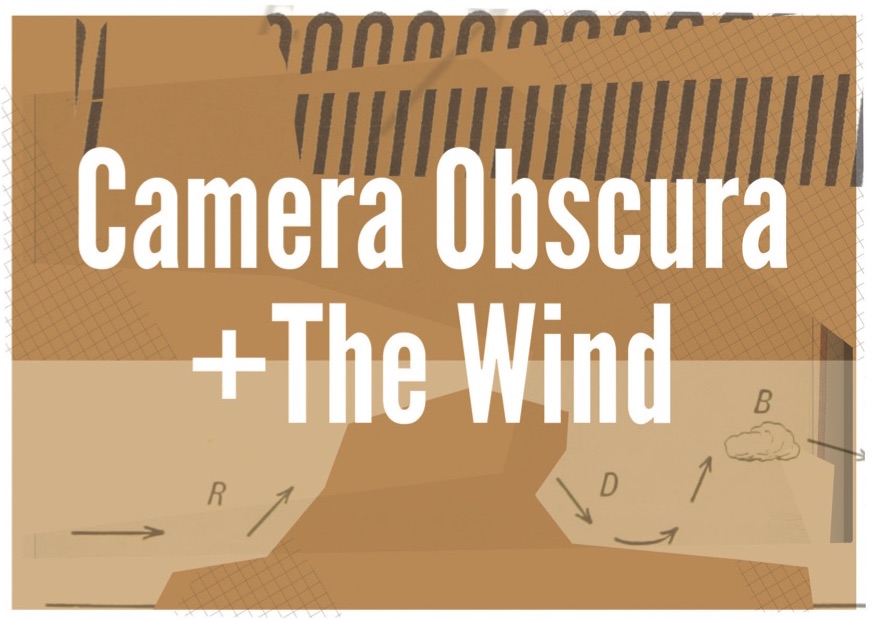
One of the artworks commissioned as part of our R&D programme.
A wind-powered cinematic device by Dolly Kershaw in collaboration with the Birmingham Camera Obscura.
'Camera Obscura + the wind' premiered at Castle Bromwich Hall Gardens during their 40s Weekend on Saturday 7th May.
Dolly Kershaw is an emerging artist who creates interactive sculptures and artworks that change depending on the conditions, environment, and individual experience and which are ultimately out of her control. She's interested in how participation and destiny can demote the artistic hierarchy and instead promote reflection and egalitarianism in relation to art's usefulness for social and environmental good. She does this by building giant toys.
After we decided to award Dolly one of the camera obscura commissions we went to the Eastside Projects summer school show where she had a piece of work. "To Participate is a metre-square tray mounted on a pivot of a car tyre with hundreds of marbles on it. Participants were encouraged to take off their shoes and rock the tray from side to side as the marbles rolled around their feet. As loud and daft as it was subtle and intense, it confirmed that we'd chosen well in Dolly. She could bring Art School theory to our camera in a way that embraced and celebrated its capacity for wonder.
When we take the camera obscura out people sometimes ask "what is it for?" It's a reasonable question as it doesn't really produce anything. We answer that we don't really know and that's sort of the point. We built it because, being photographers, we wanted to build one, and when we showed it to people they always came out smiling. So we decided it's a device for making people smile. For all the work we do with camera obscura, the smile, and the causes of the smile, is our starting point.
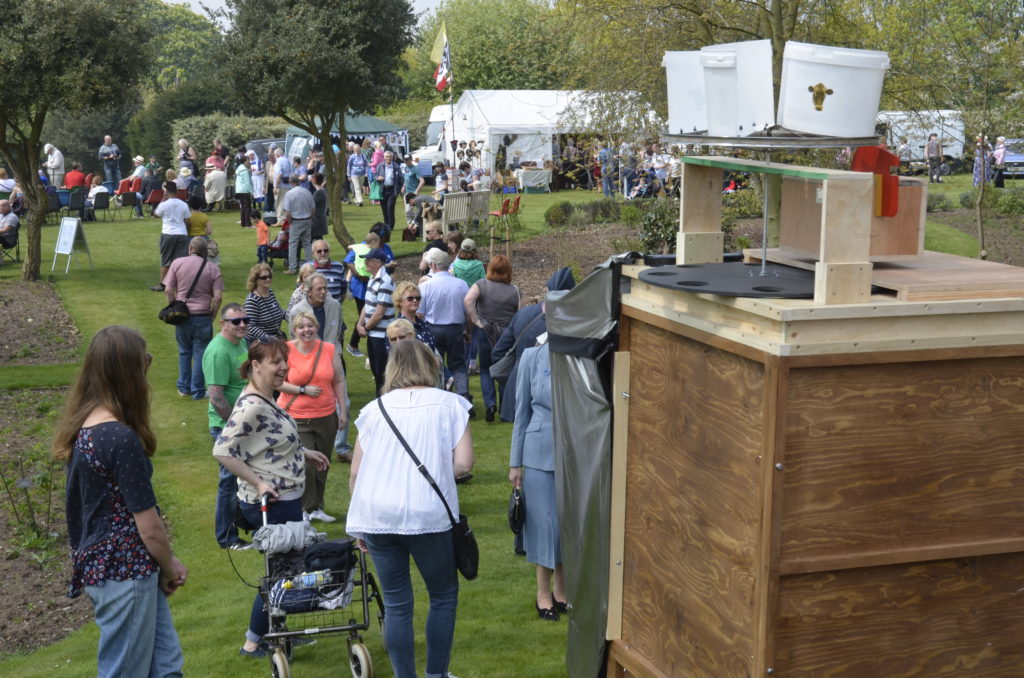
The camera we built is a specific shape and size. The screen is a one-metre square and the lens hole is 120cm above the base. The screen can be raised and lowered up to 40cm to focus the image (lower for close objects, higher for those far away). The mirror sits in a motorised housing, can be rotated 360 degrees, and tilted up and down. In addition to the top and bottom it has three sides and is open on the fourth, which is extended with a curtain to keep the light out. Up to three participants sit behind this curtain and look at the image on the screen. If the mirror is pointing behind them, the image is the right way up.
This is not the only way to build a camera obscura. In fact, above a certain size it's safe to say no two camera obscuras are the same. We certainly didn't get everything right with our design and it's our intention to learn from this as we work on future cameras. But for now this is our camera, and we wanted our artists to work with this camera alone. In her work, Dolly wanted to augment it, however.
Dolly came to us with a clear proposal. She wanted to allow the wind to control the camera: "To build a framework that sits close to the camera obscura and makes 'exposures' at the viewer as the wind blows. So when people look into the box, rather than seeing a continuous image, or 'film', they only see a picture when the wind is blowing, and at the rate that the wind is blowing." This would involve modifying our camera by adding a mechanism which altered its behaviour. Technically this was not allowed as it would create a new and different device, but this idea of using the wind really intrigued us.
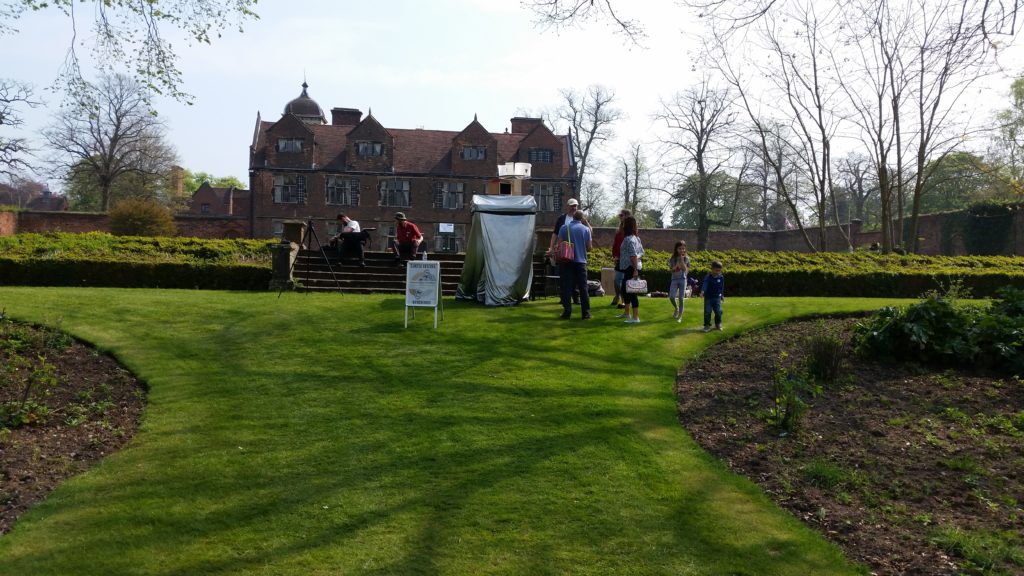
The camera obscura is totally dependent on light. When the the sun is shining on the landscape, the image inside glows with vibrant colours. If clouds come over the colours fade. As evening approaches the image disappears and our time is done. This is the same for all cameras that capture light, but the photographic camera can leave the shutter open, or boost the image with more sensitive film or digital amplification. The obscura does not have this luxury. What you see is what you see.
A common thread throughout the development of all the works was the amount of control the artists needed to cede to the camera and its environment. The others had to navigate and learn to accept this, but Dolly embraced it from the outset and pushed it further. To be dependent on the sun wasn't enough. She wanted to be dependent on wind, opening the door to all manner of natural automation. What else could we power the camera with? Rivers? Trees? Animals?
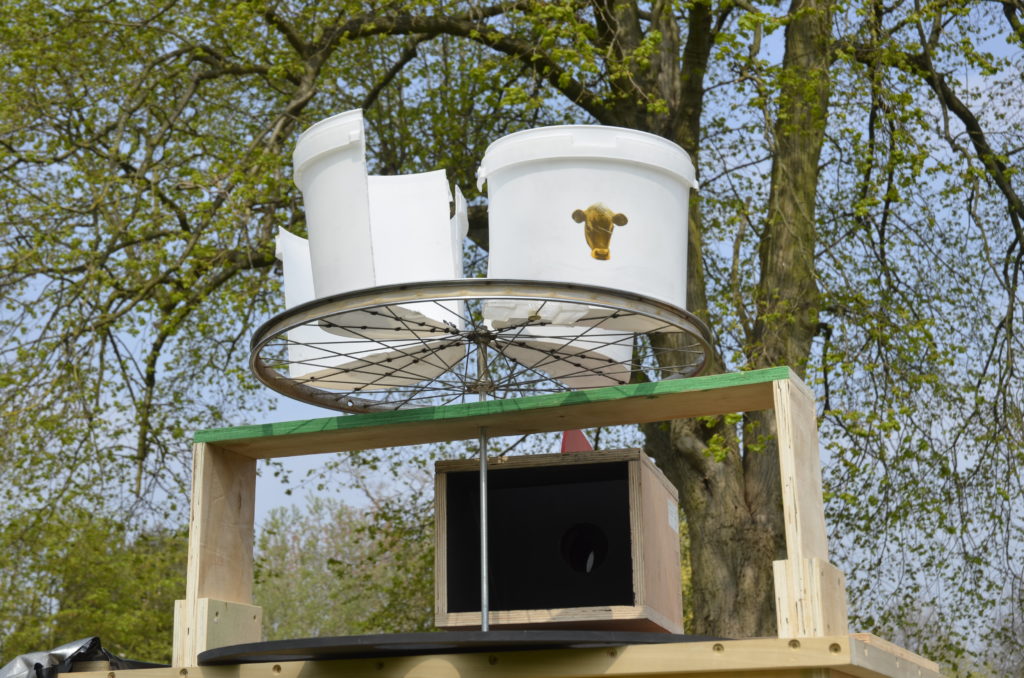
Building a kinetic sculpture is as much engineering as art and Dolly went through a number of designs before settling on a whole new top for the camera. The mirror housing was replaced with a weather vane style enclosure which pointed in the direction of the prevailing wind. Above this was a bicycle wheel, chosen for its smooth running, with four sails cut from plastic tubs. This turned a large disc with a sequence of holes which passed over the lens. As the wheels turned the light was permitted and prevented from entering the camera, creating a flickering effect. The faster the wind, the faster the flickering. No wind, no flicker.
Because this was a technical augmentation and not a performance, staging Dolly's piece was a little different to the others. We decided it'd be interesting to present it as we would the camera in its normal state, taking it to a crowded area and letting people explore it on their own. We'd been building a relationship with Castle Bromwich Hall Gardens, a community,run garden in east Birmingham, and they happened to have an event on – a 1940s weekend featuring wartime costumes, exhibitions, vehicles, singing and a Spitfire flyby.
Suffice to say this was not the usual art gallery crowd.
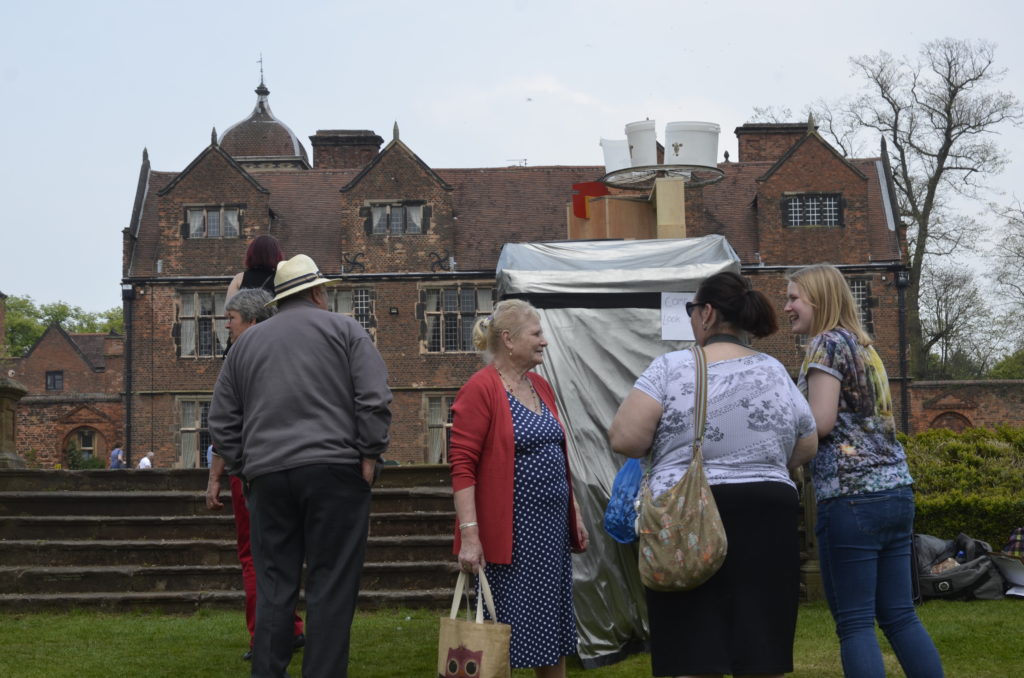
Dolly later told us: "Sharing my outcome at Castle Bromwich Hall Gardens was very different to the usual exhibition scenario. The participatory nature of the camera encourages much more of a dialogue with the public than is often the case with exhibiting work, and I found this very helpful in developing a discussion about the work itself and my practice with many different people. I have felt able to continue to make these ideas come to life, and understand the possibilities."
Our intention with this project was to see how working with artists to take the camera obscura out of the novelty, fairground setting could help us see its potential. While we hoped the process would work both ways it was very rewarding to see the camera draw the artists into its world and encourage them to work with it in its traditional context. As a technical and aesthetic exercise, Dolly's piece showed us what Camera Obscura + The Wind equals, but also showed us Camera Obscura + Dolly Kershaw.
Follow Dolly's development of this work on her project blog.
